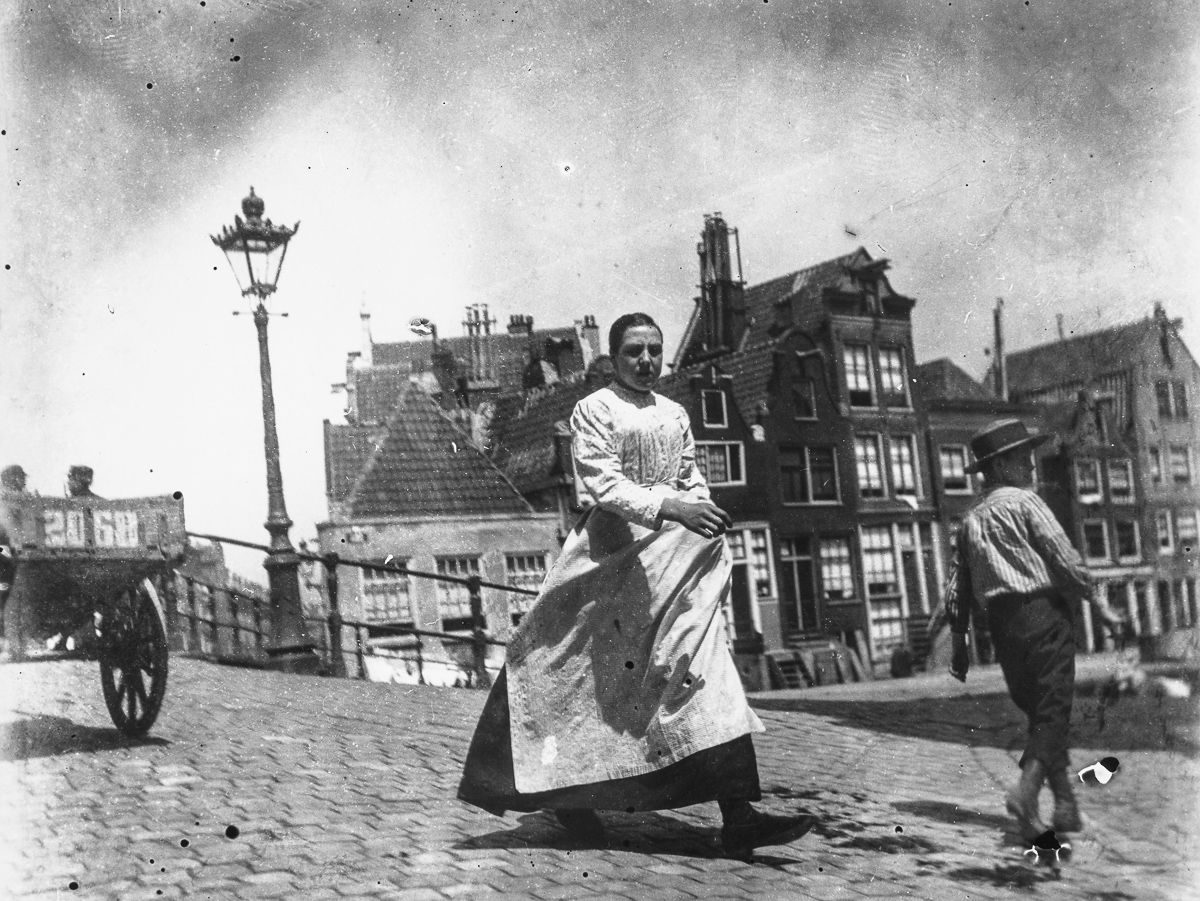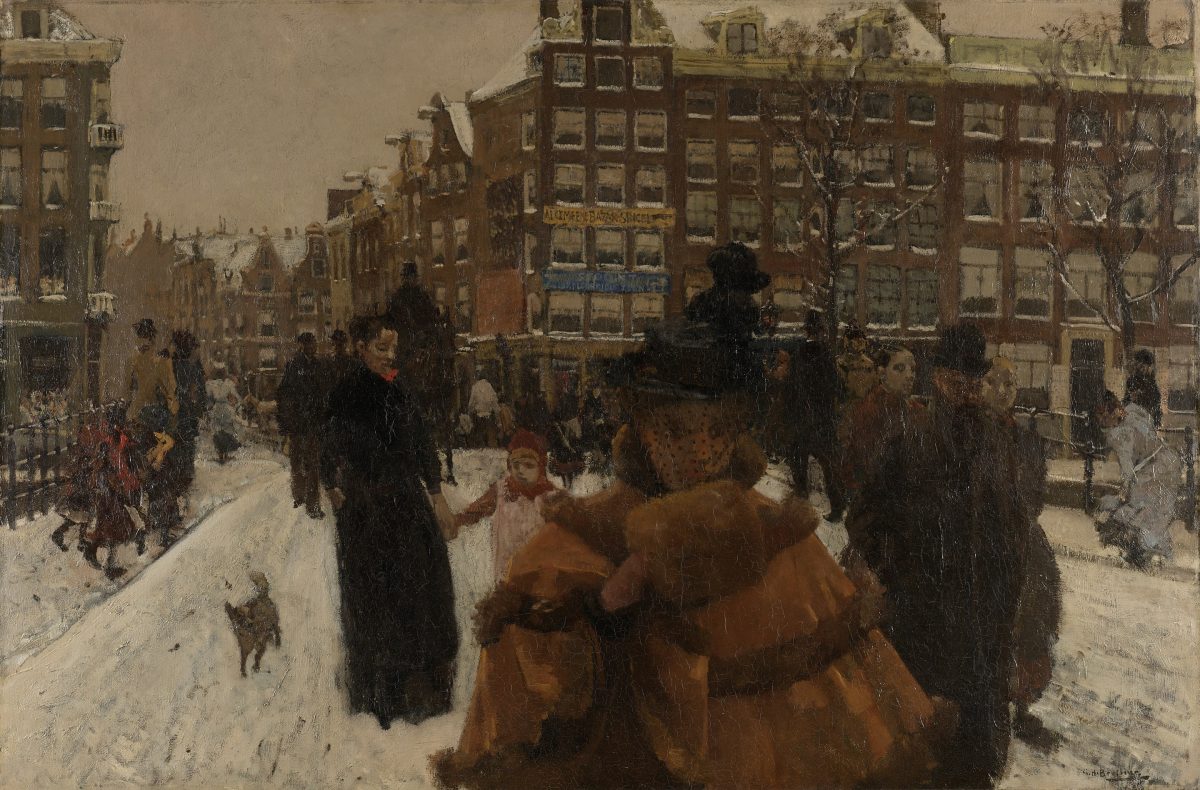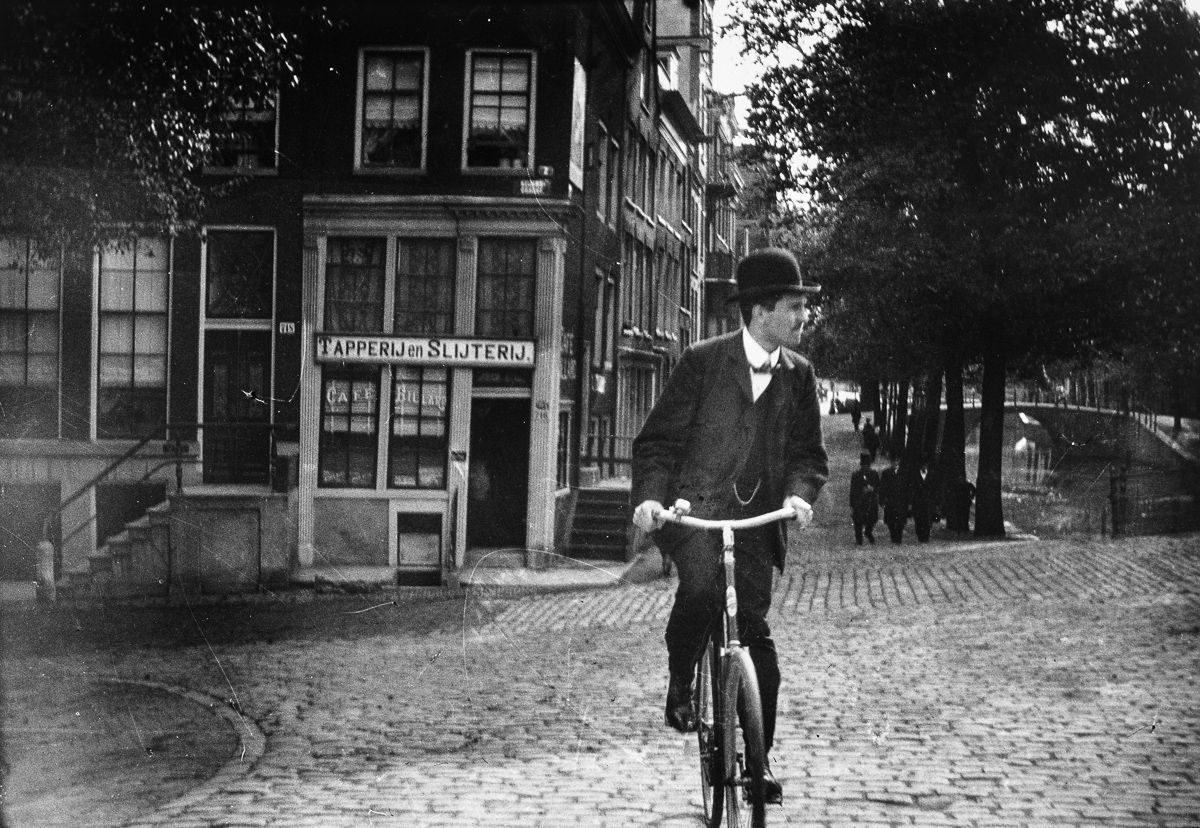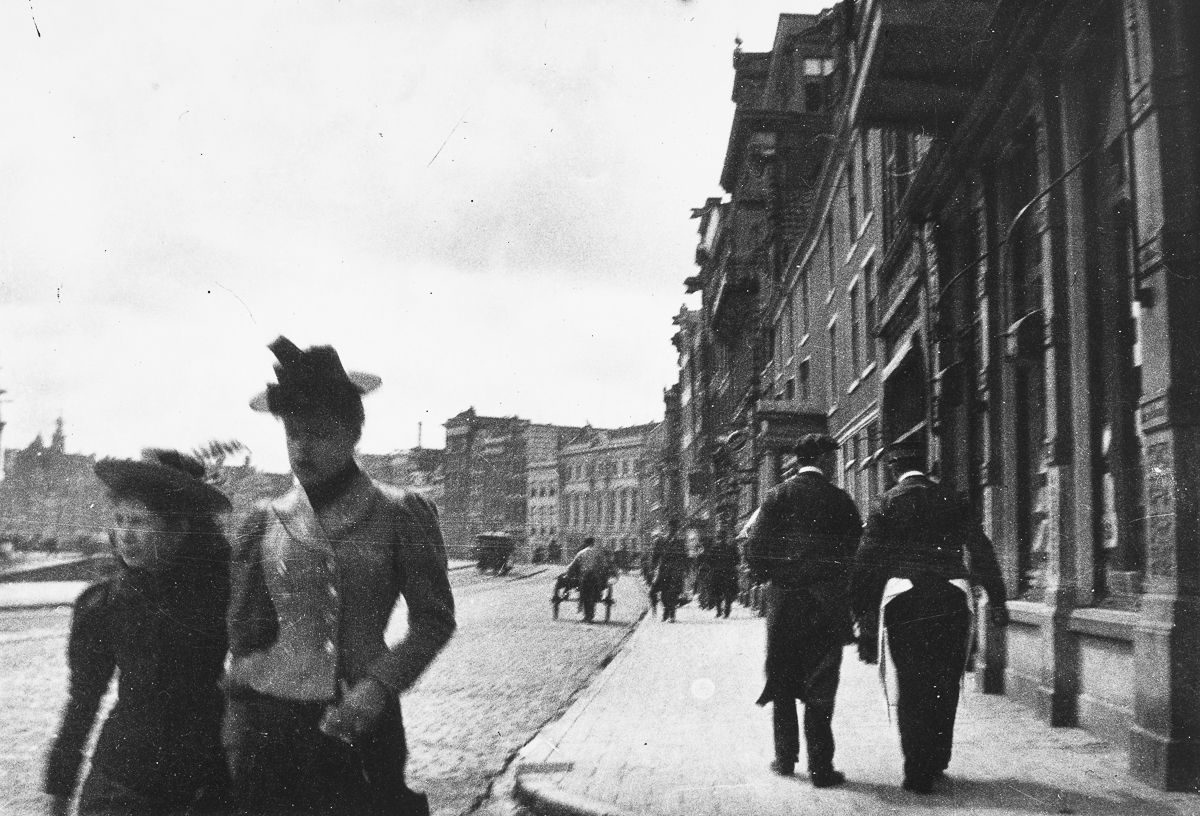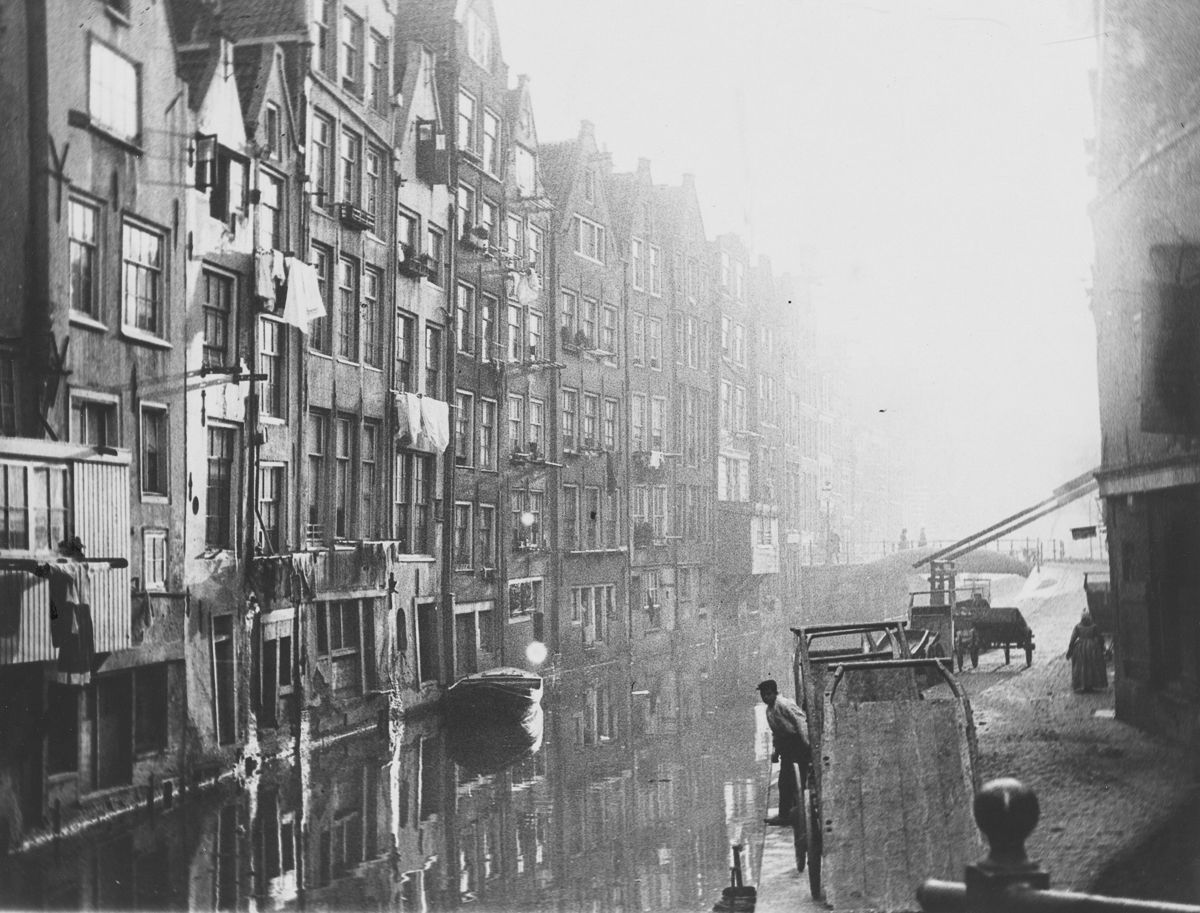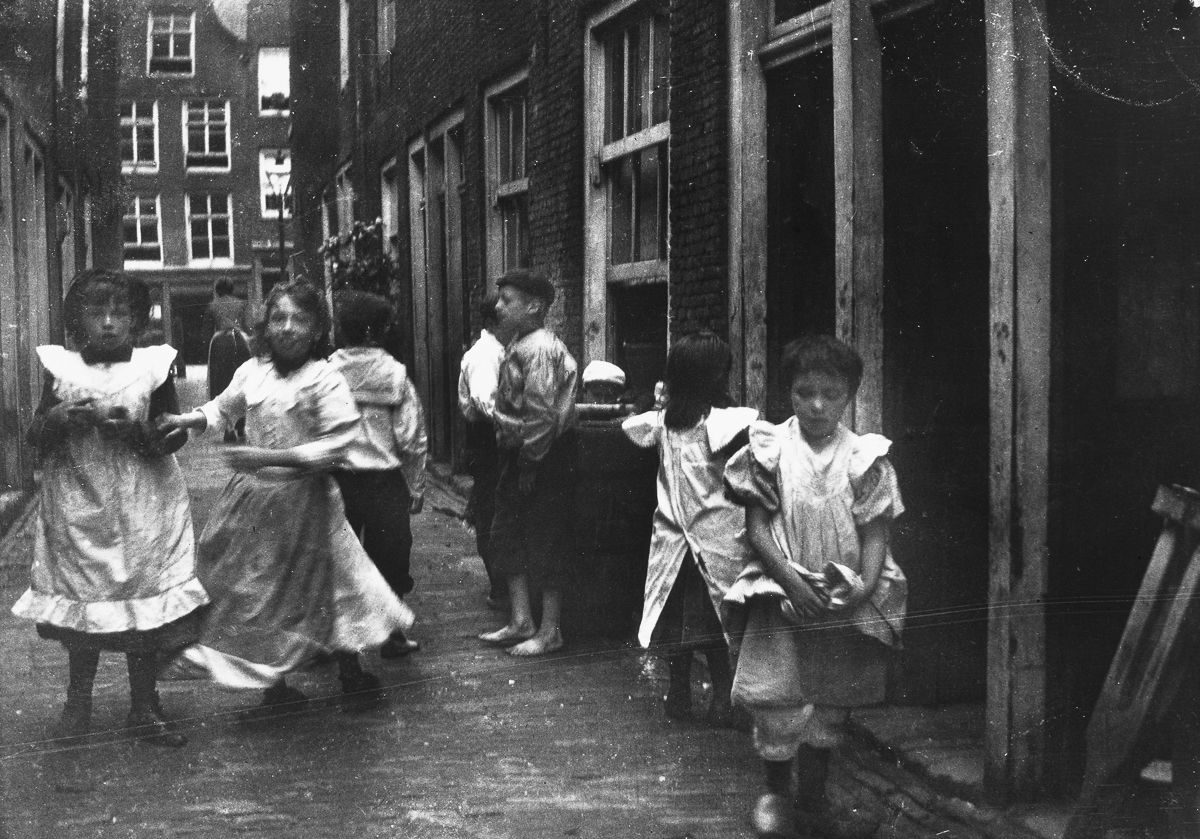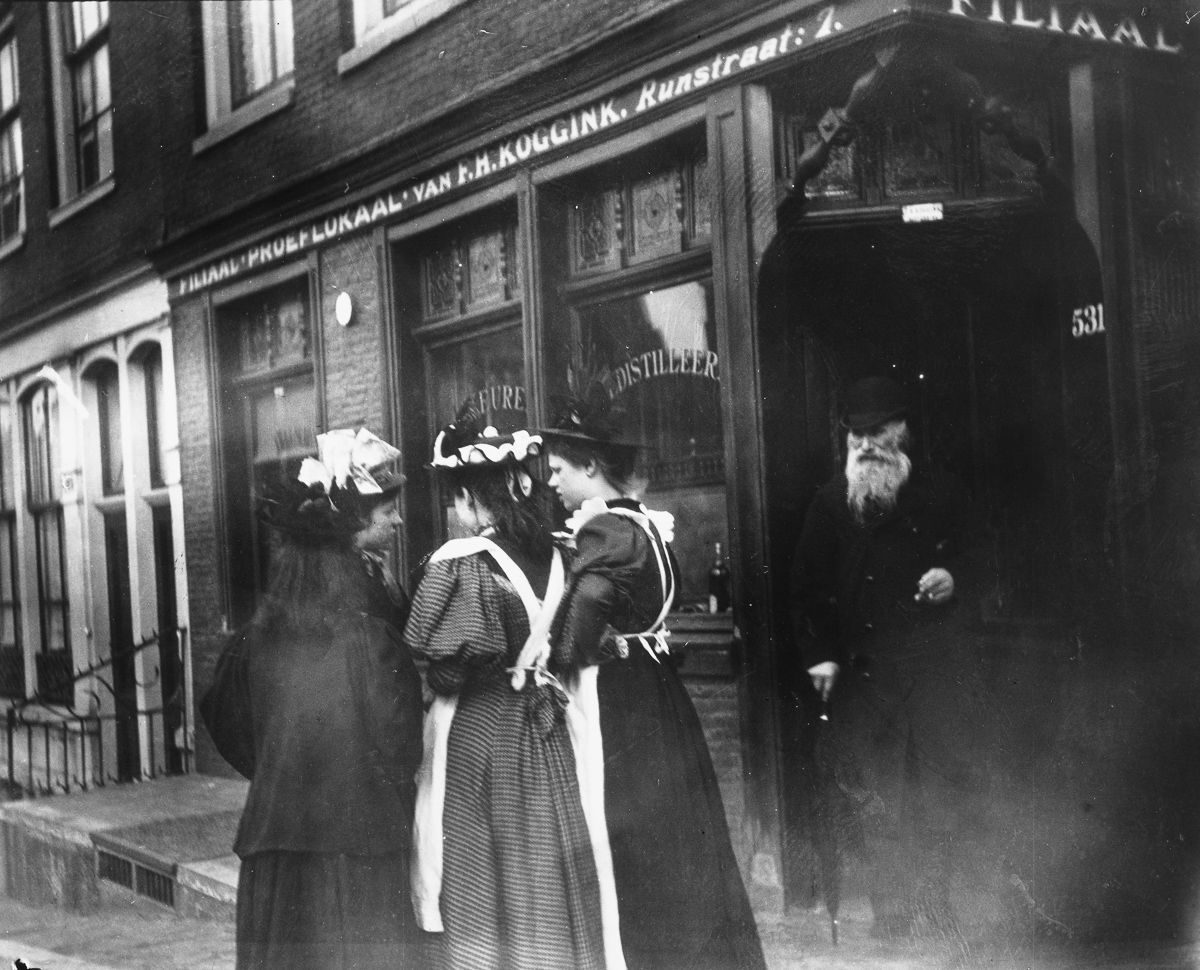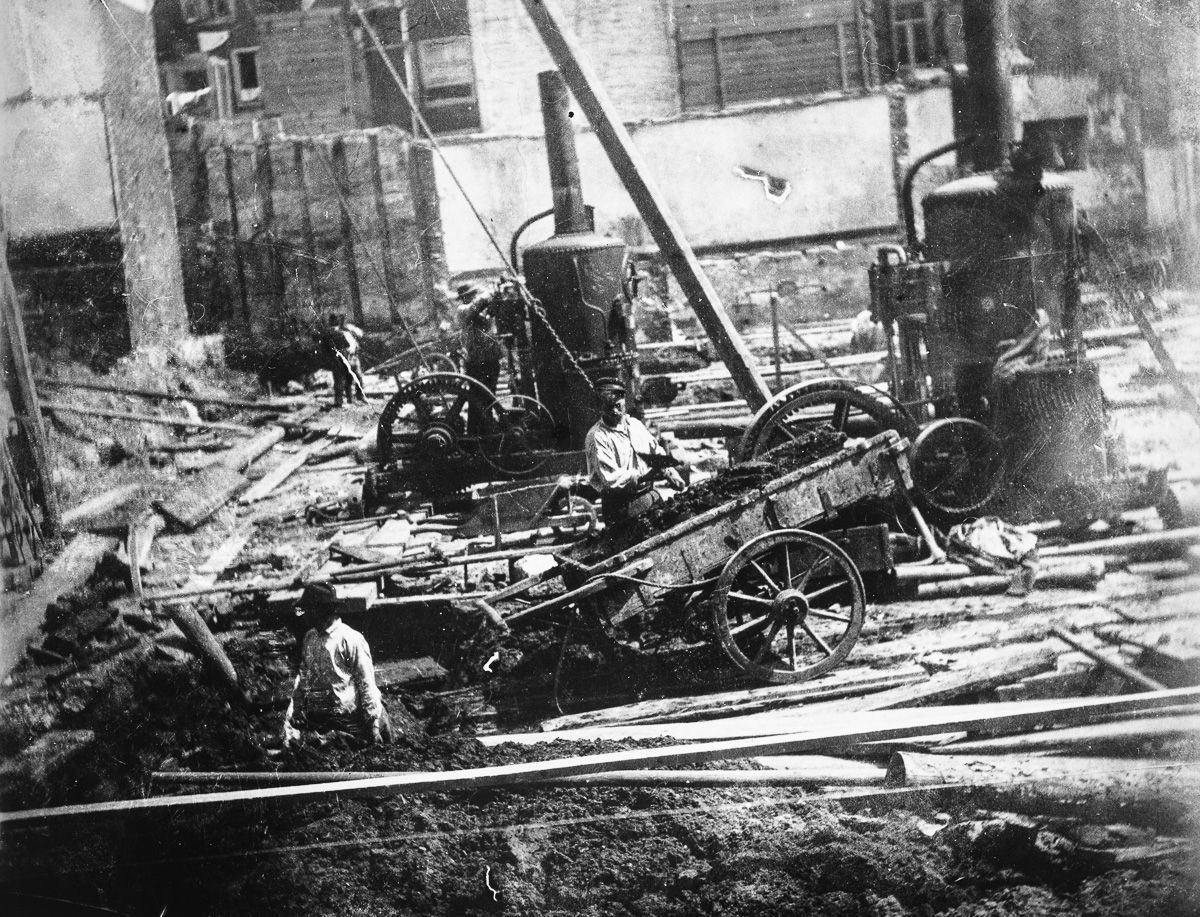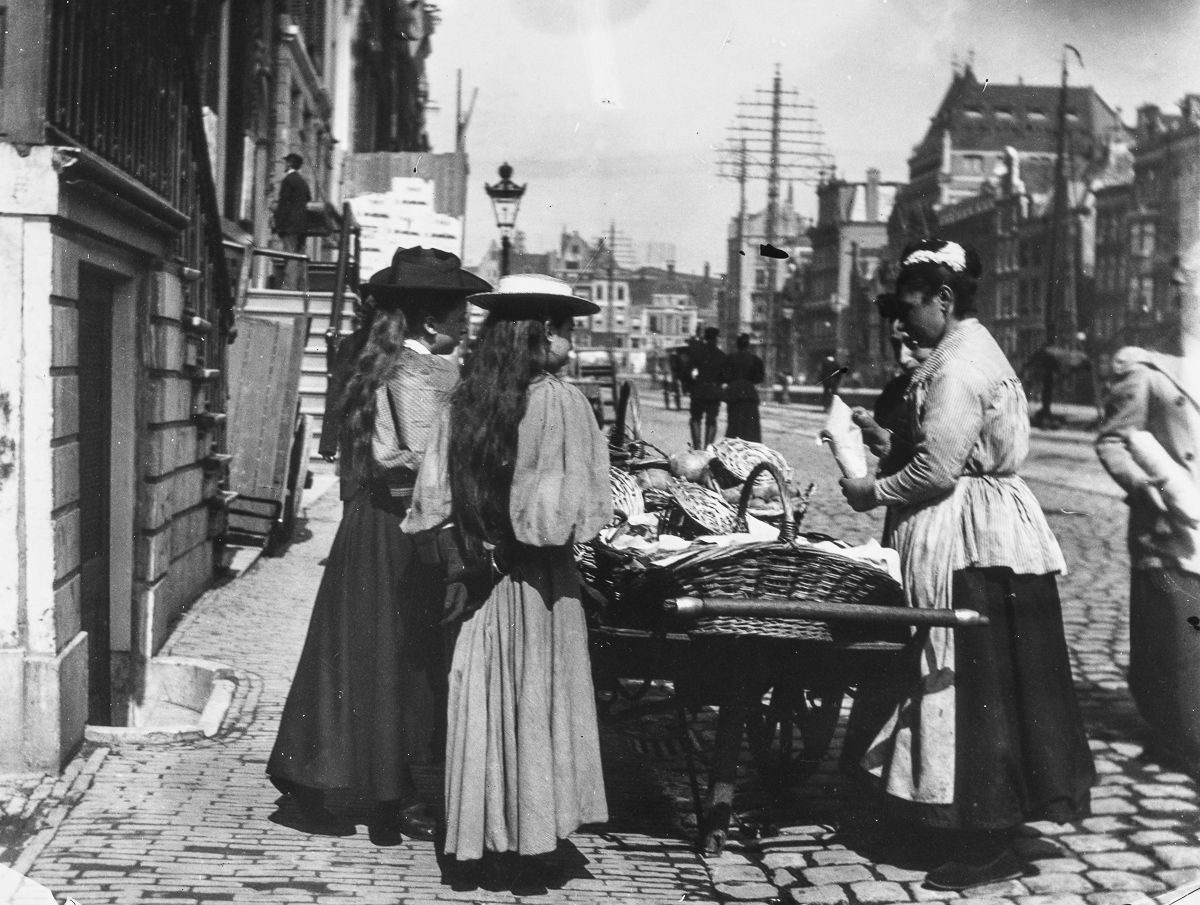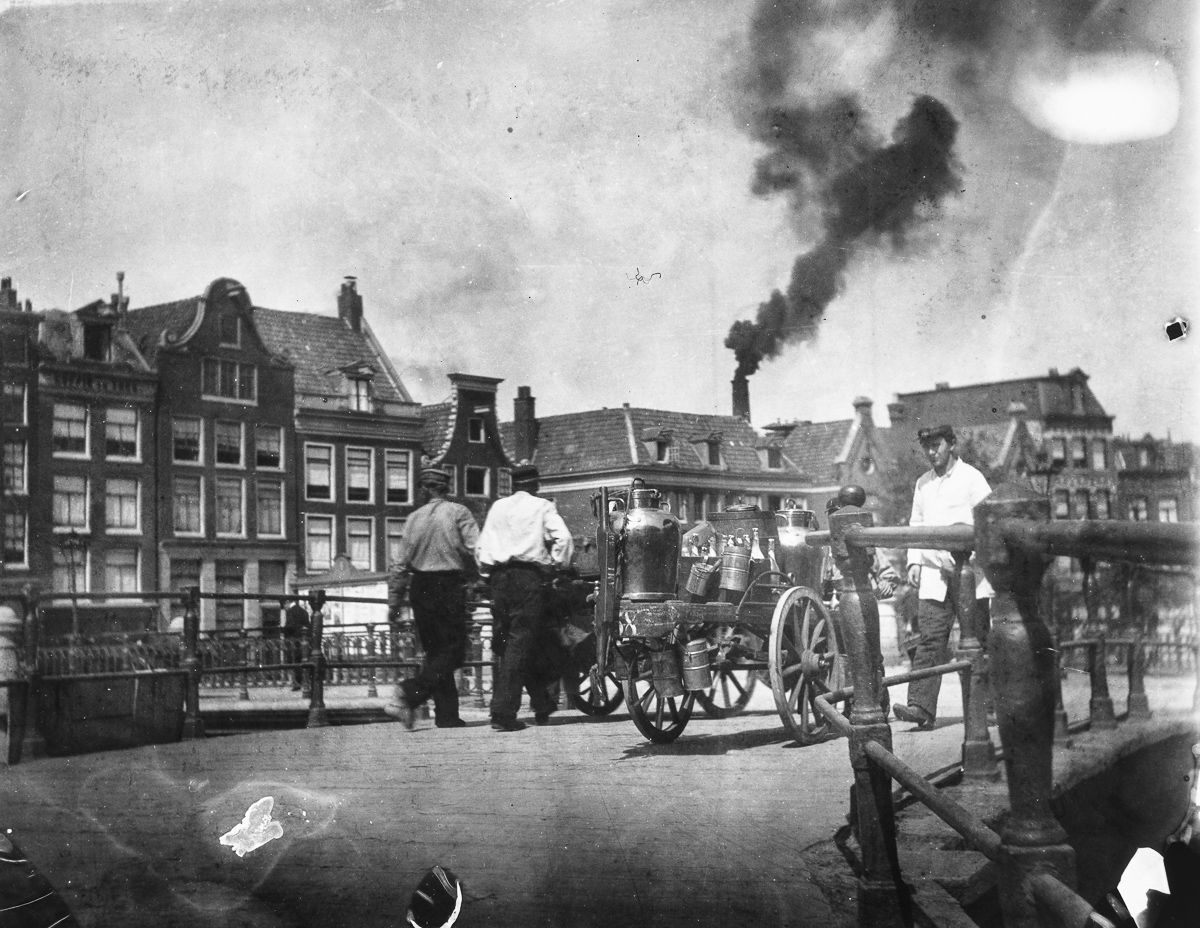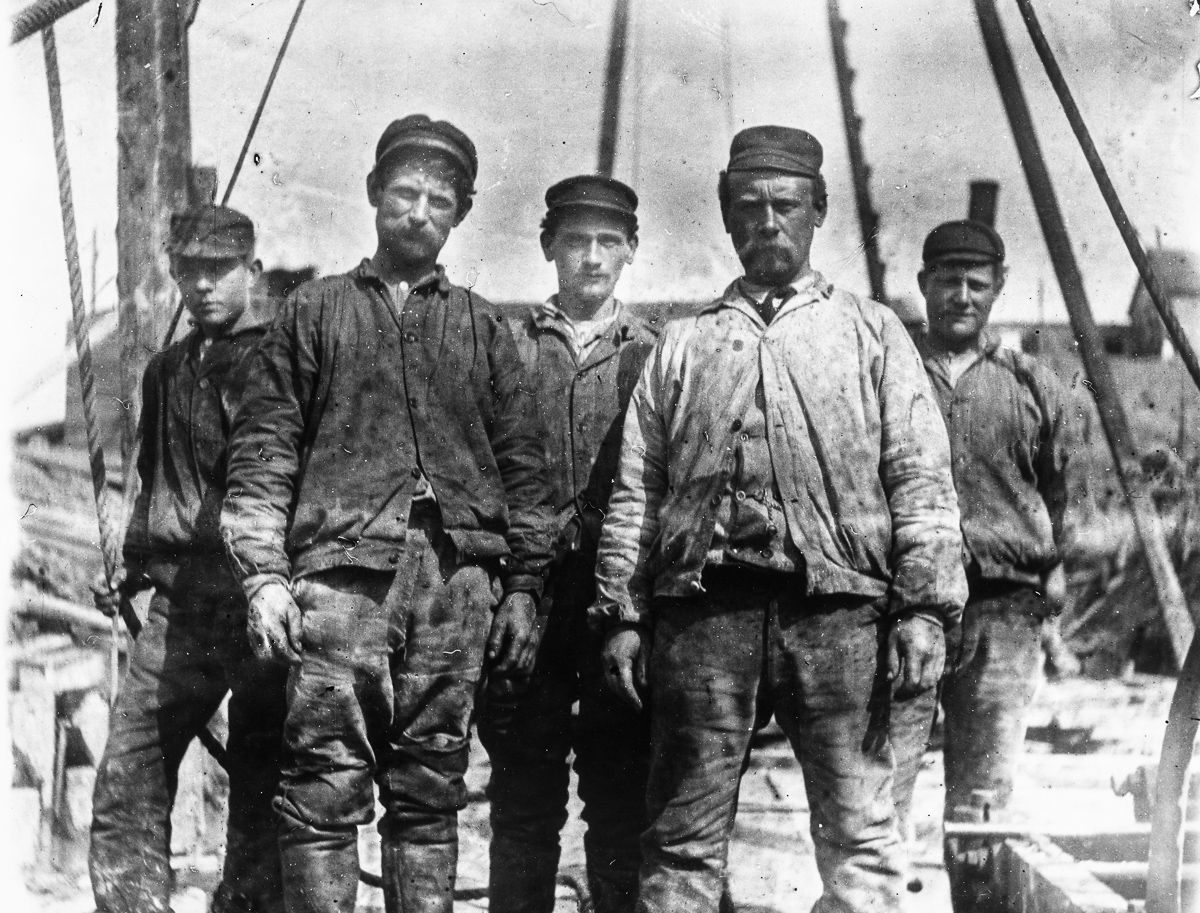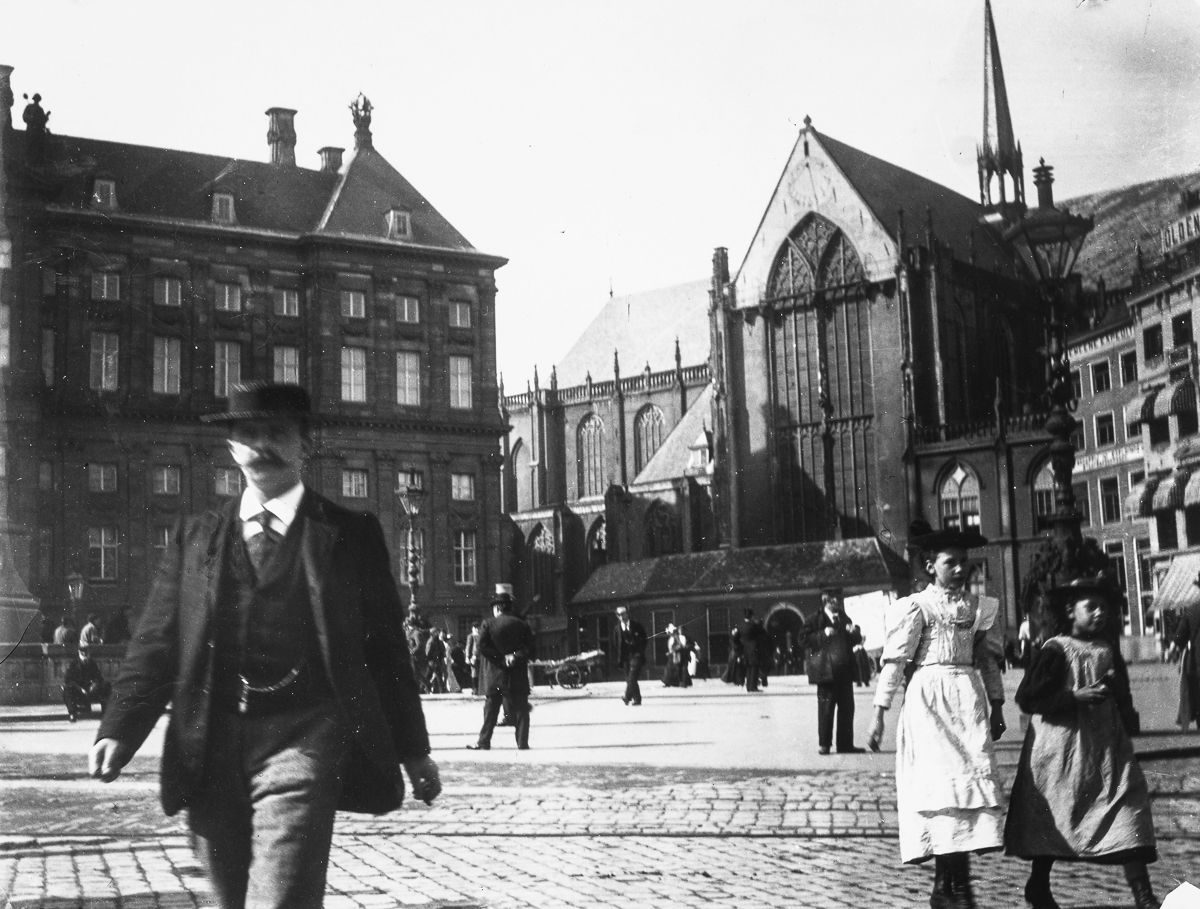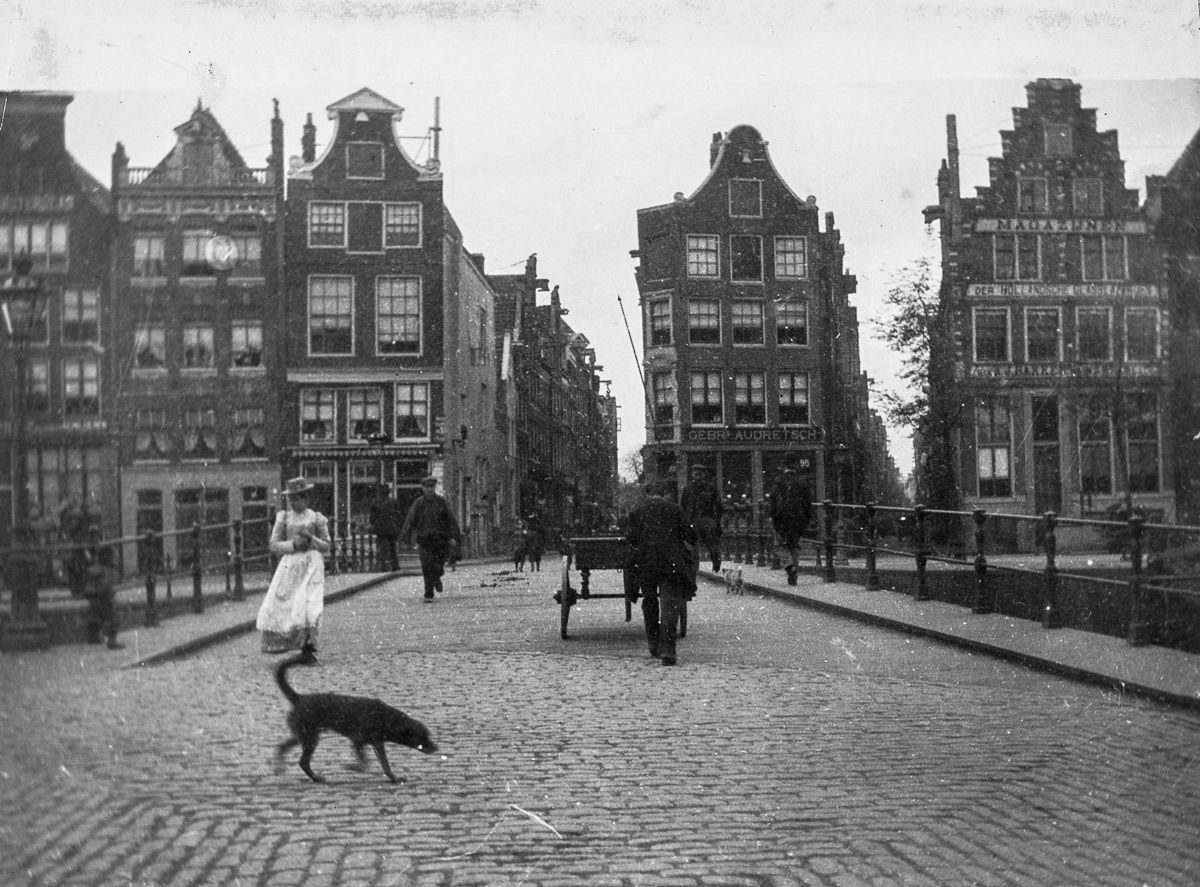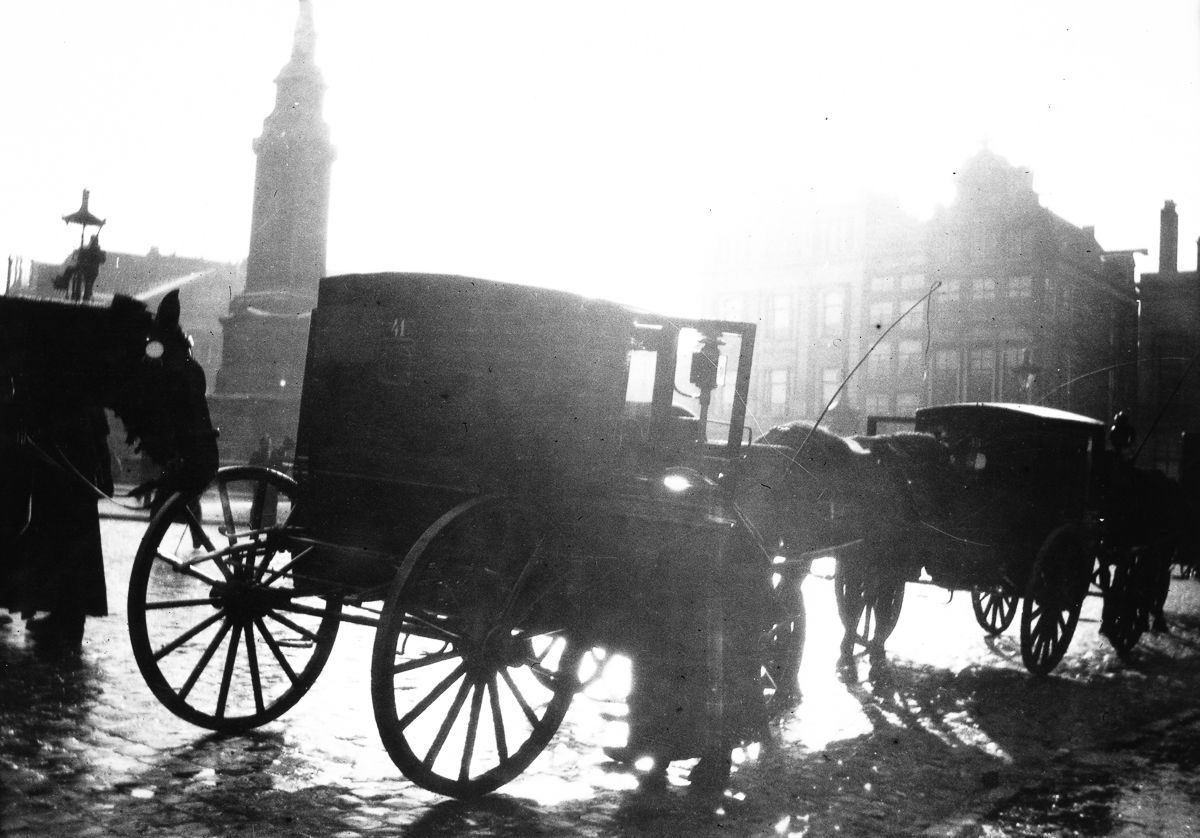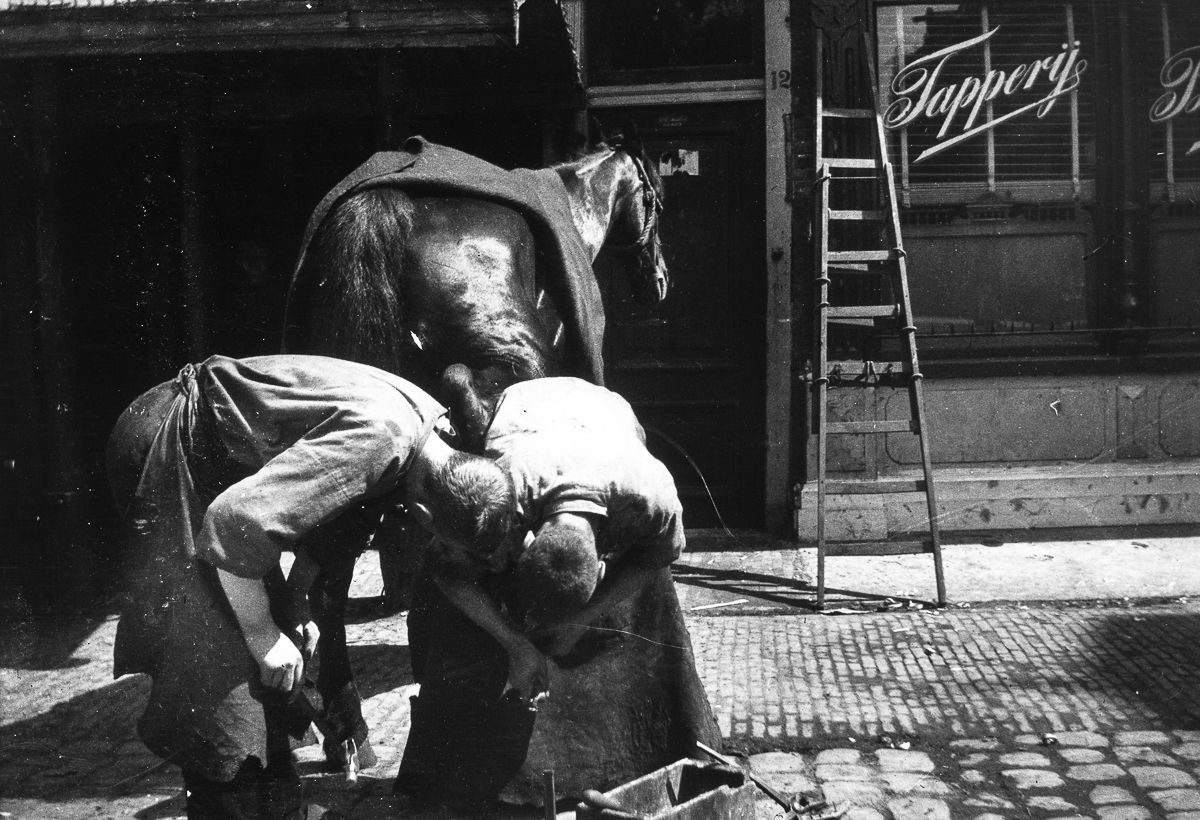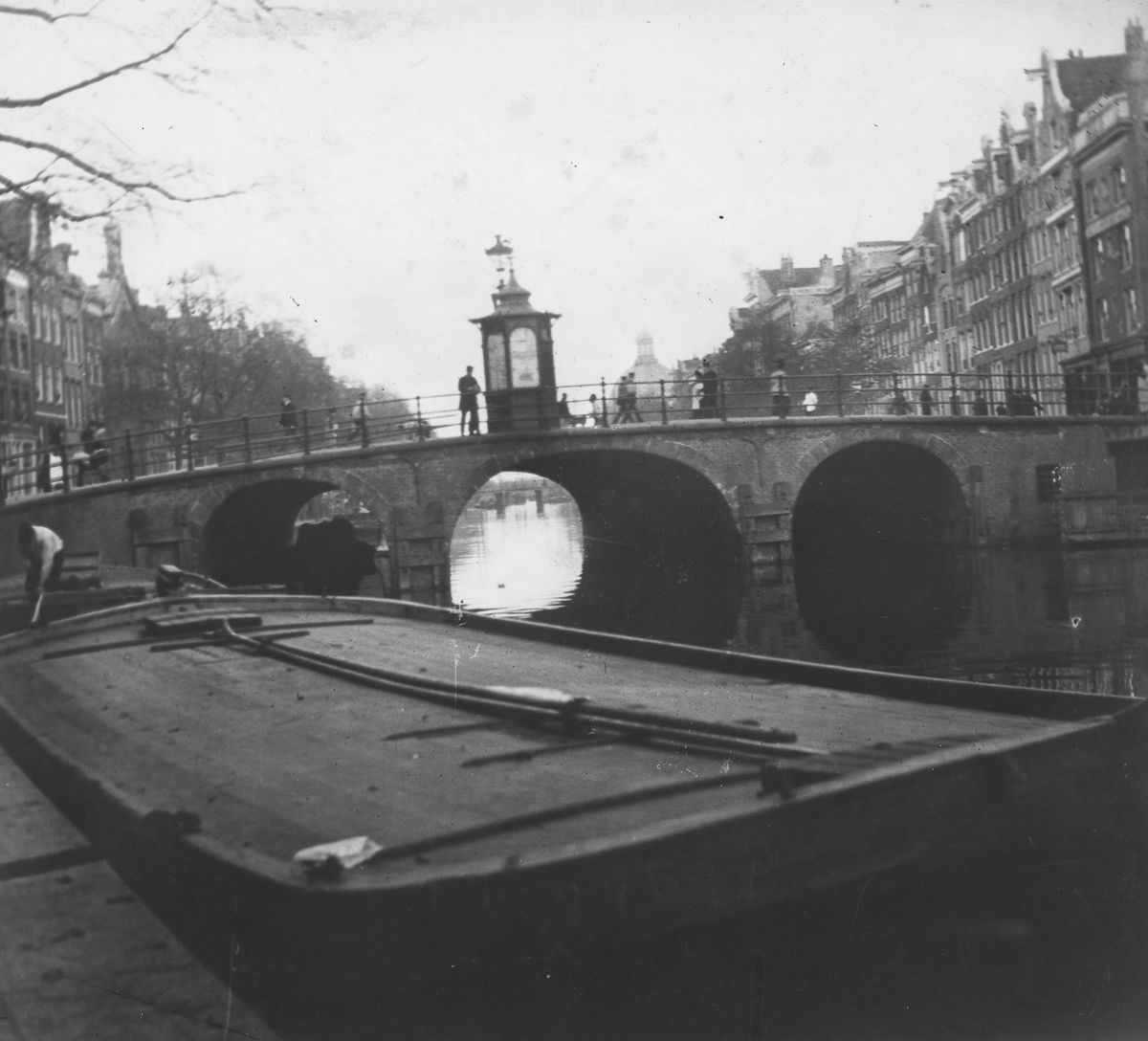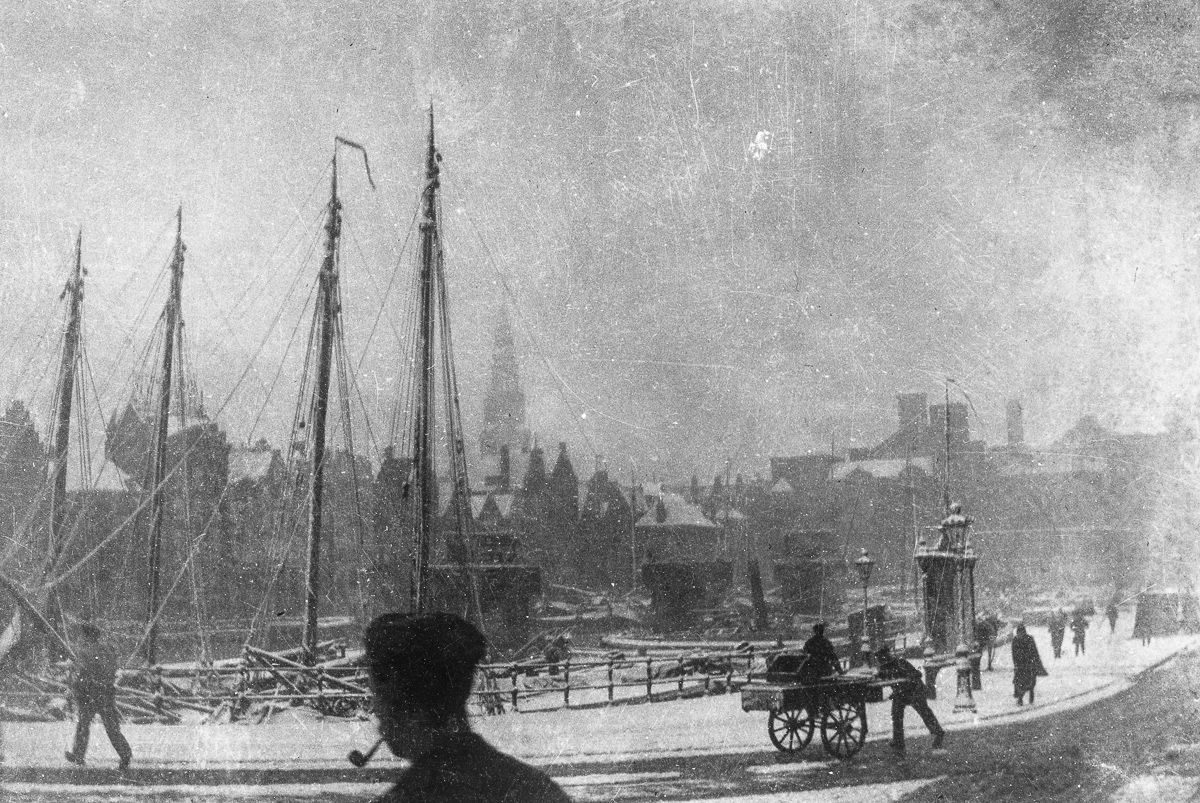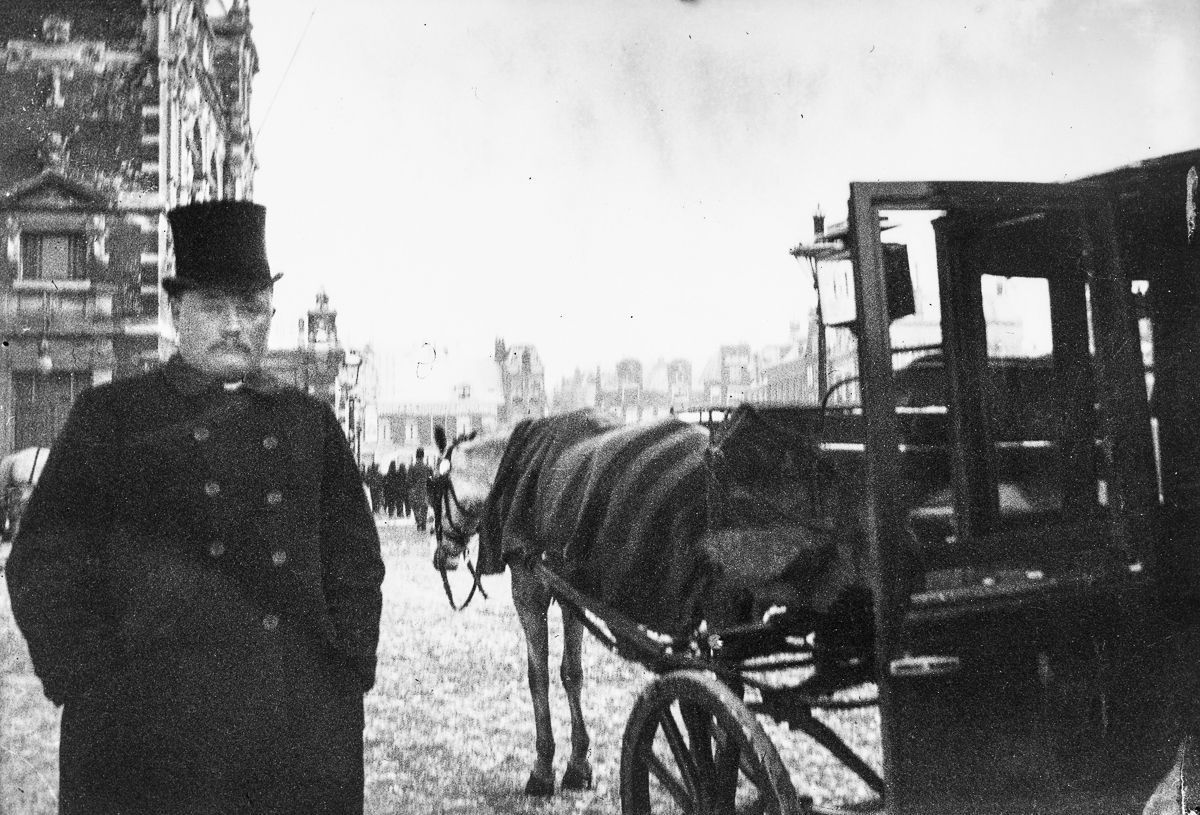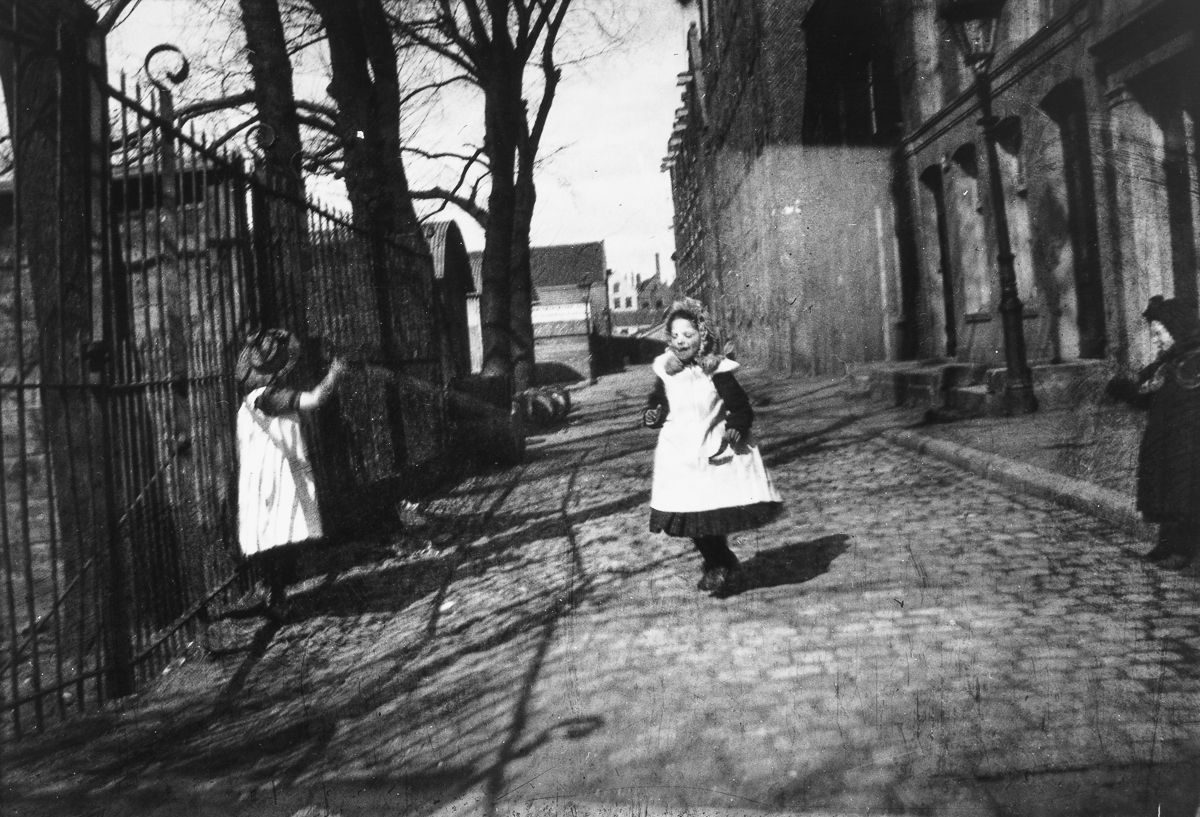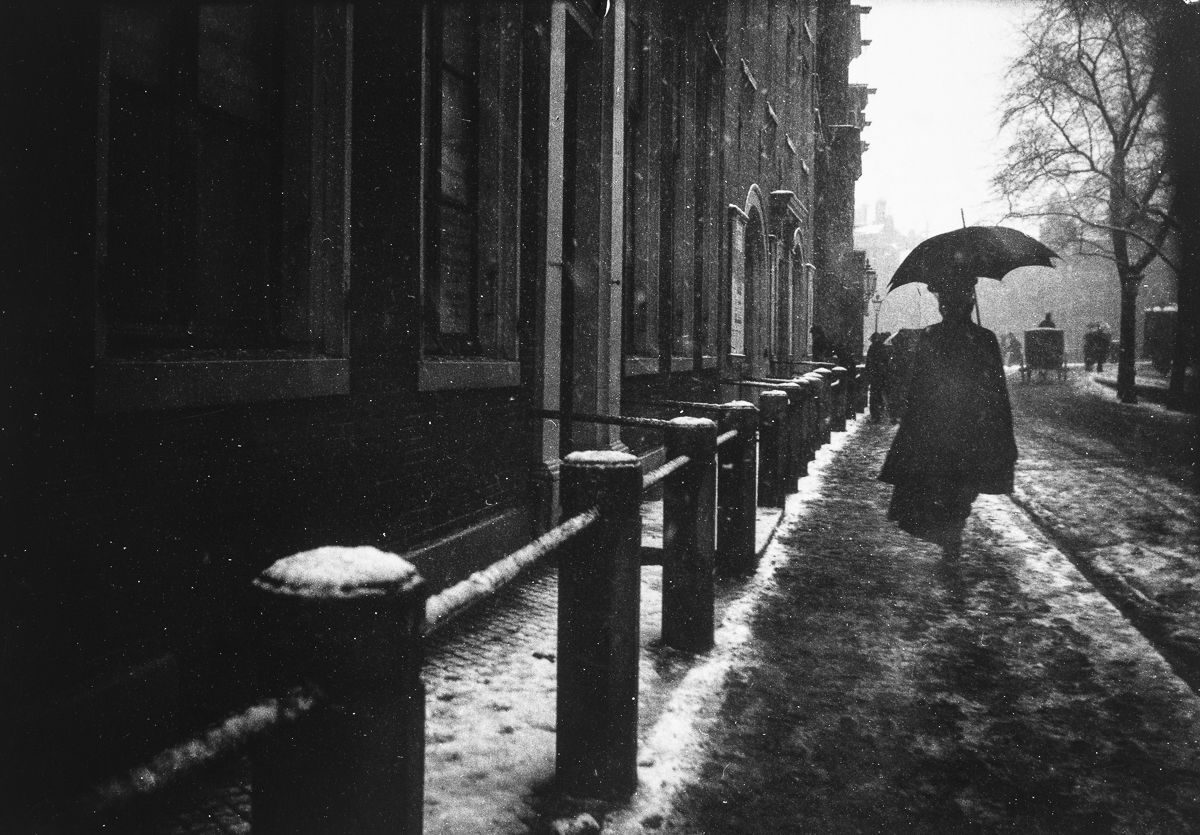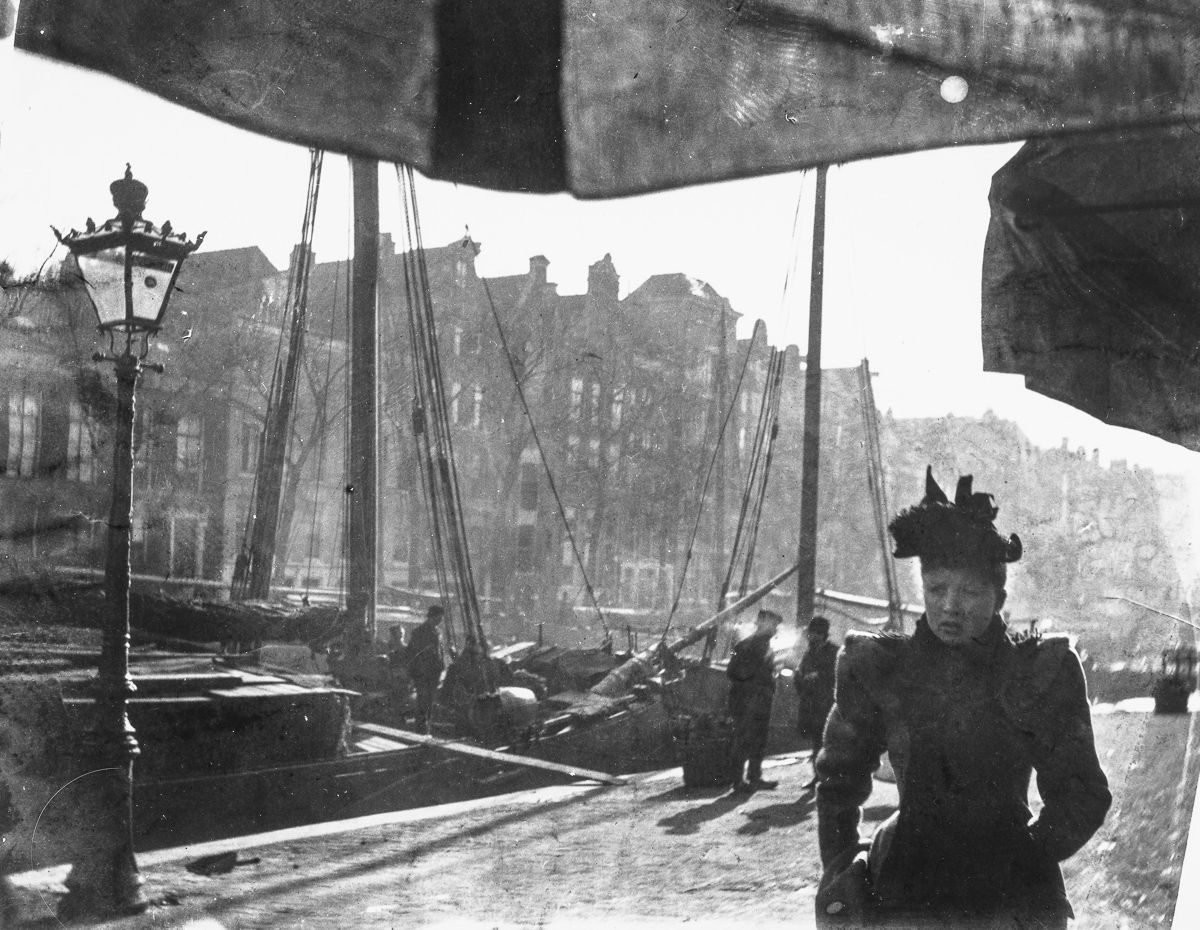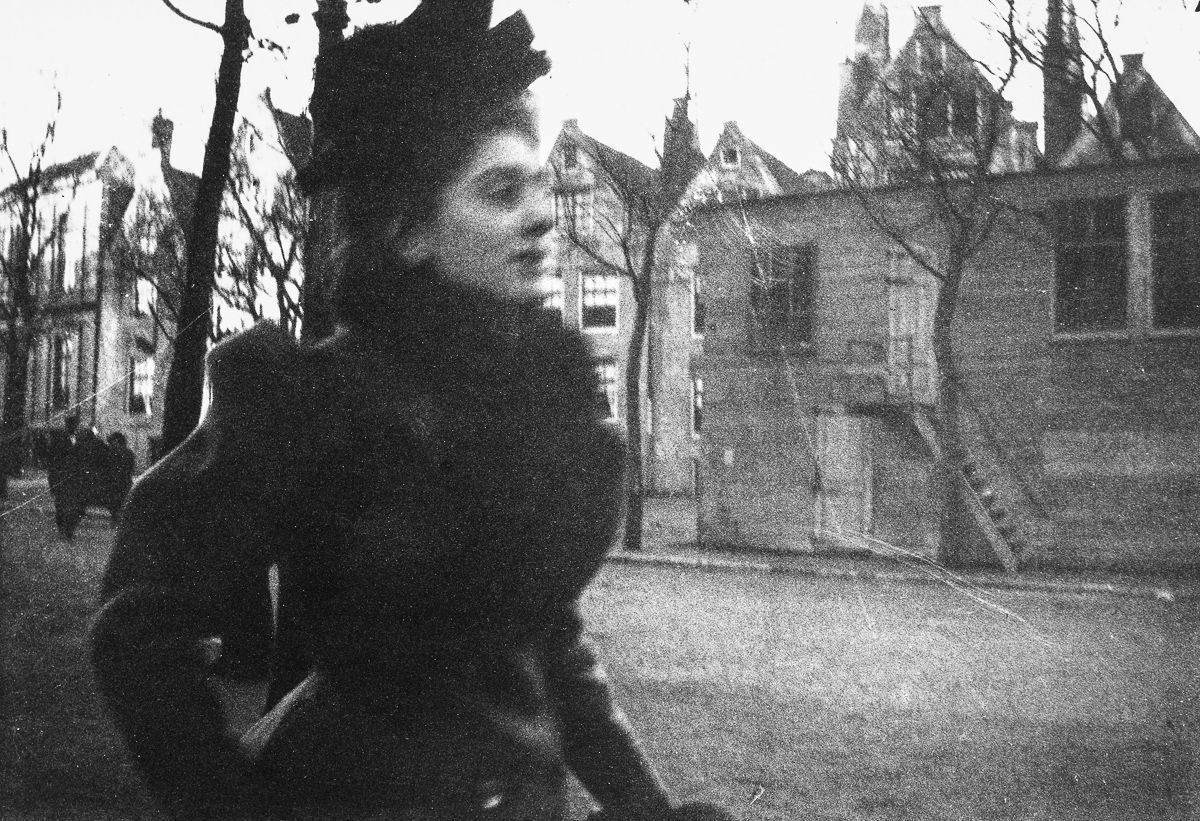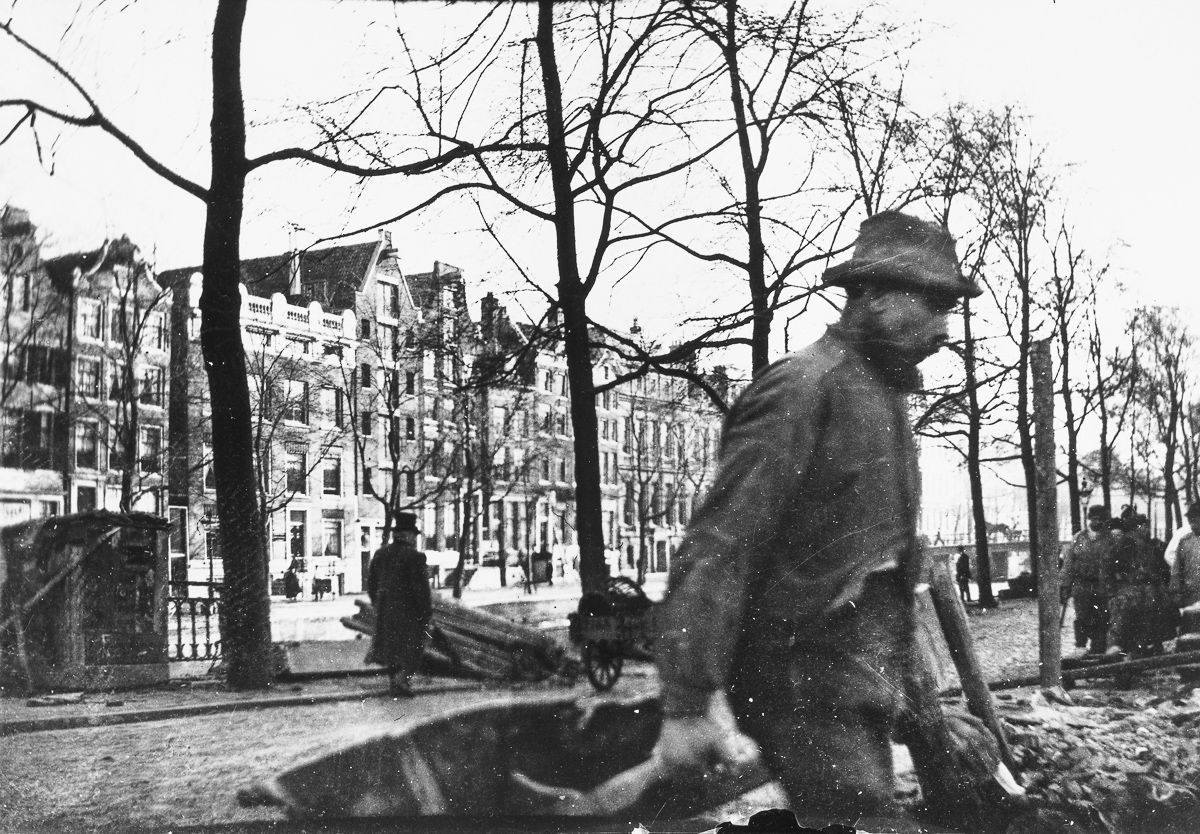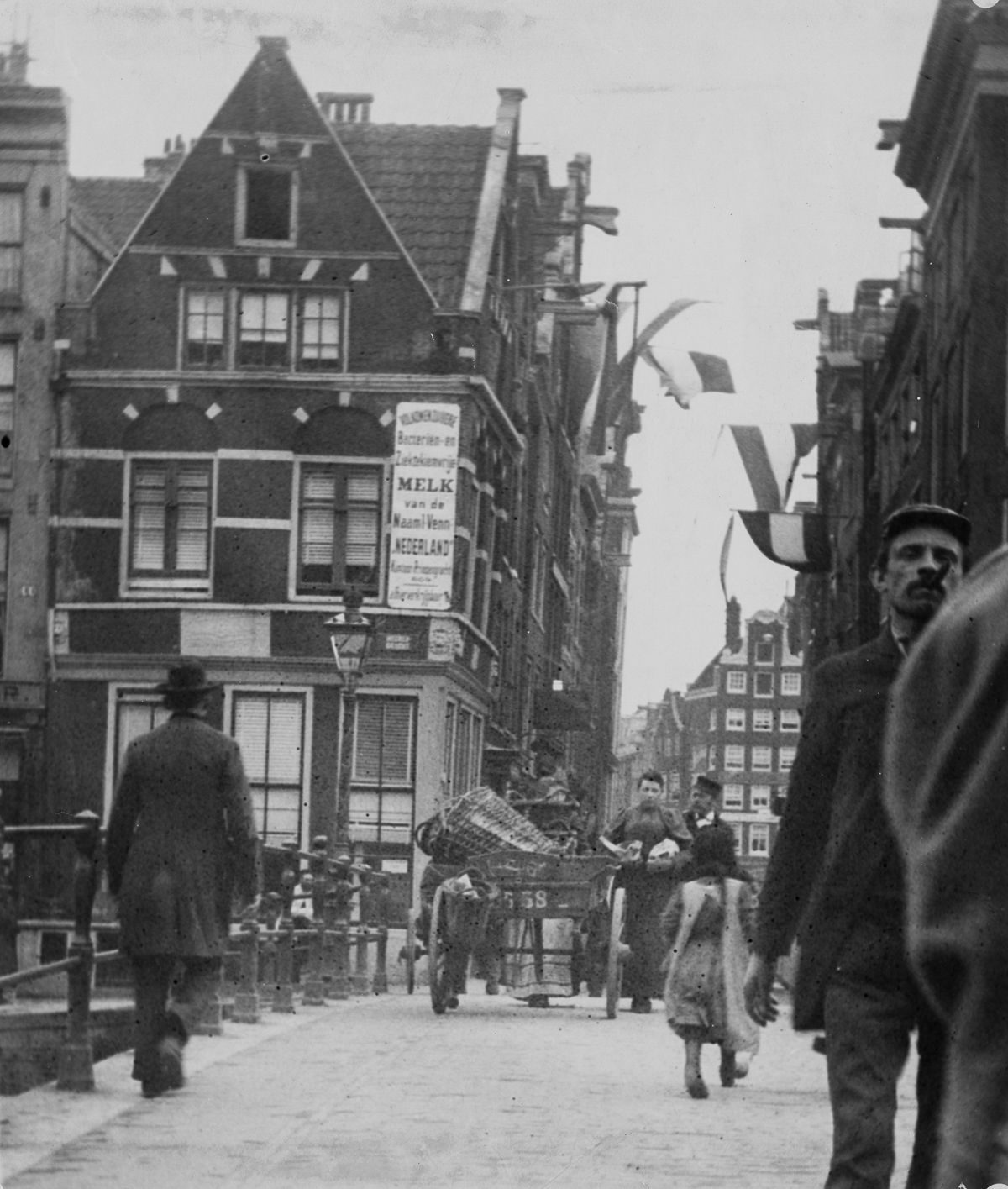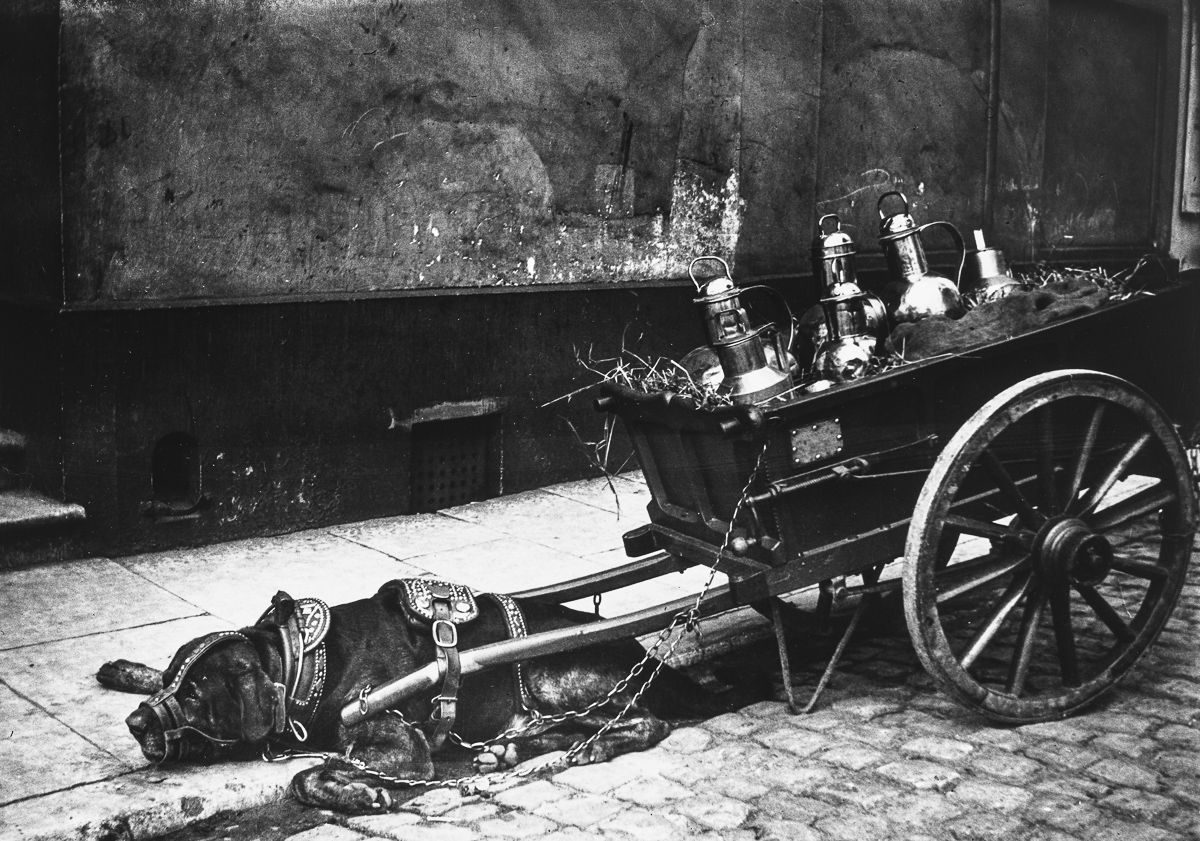In the 1890s Dutch impressionist painter George Hendrik Breitner (12 September 1857 – 5 June 1923) took his camera onto the streets of Amsterdam. Could the camera record changes in light and motion, capturing the essence of any subject and not only the details? And could an avant-garde Dutchman on a cloudy Dutch day translate a quintessential French movement into photographs?
Breitner’s street photography focused on the everyday, in keeping with his view of himself as ‘le peintre du peuple’ (the people’s painter). There’s a bit of the photographer’s magic and revolutionary zeal in impressionism, and a shared history of disproving the knowing and smug. Both were not taken serious by the art establishment – of the impressionists grand total of eight shows in Paris, one was staged in an empty photography studio.
One image below illustrates the similarities between street photography and impressionism. Breitner’s portrait of life in motion in Singelbrug near the Paleisstraat in Amsterdam, ca. 1897 could be a photo put through an Instagram ‘impressionism’ filter.
Via: Mashable, Anorak, Europeana
Would you like to support Flashbak?
Please consider making a donation to our site. We don't want to rely on ads to bring you the best of visual culture. You can also support us by signing up to our Mailing List. And you can also follow us on Facebook, Instagram and Twitter. For great art and culture delivered to your door, visit our shop.
